When it comes to choosing the perfect paint color for your home, the options can seem overwhelming. With countless colors and shades available, how can you be sure you’re making the right choice? The answer is simple, you must test paint colors in your home before committing to one. In this post, I’ll share with you the absolute best way to test paint colors and some key tips for adjusting your paint options after sampling to ensure you end up with the perfect color for your space.
Can I just choose a paint color I like from a picture?
Picking a paint color solely based on what you see in a picture is very risky. Those instagram posts and online photos can give you a sneak peek, sure, but they often don’t capture the true nature and undertones of the color. Things like lighting, filter settings, and screen differences can make a paint color look completely different in a picture than it does in real life. That dreamy, soft blue-gray shade you spotted online might turn out to be way more blue or way darker once it’s on your walls.
To see an example of how photo filters change the way a paint color looks, just check out the side-by-side living room pictures below.
To play it safe, you need to make sure that your chosen color works in your actual space, with your unique lighting conditions. And, the only way to do that is to grab samples of paint colors and check ’em out in your own home. That way, you won’t end up with any unexpected color surprises!
I saw a great paint color in person at someone else’s house, can I just use that?
t’s awesome that you found a paint color you love at someone else’s house! But, here’s the deal…paint colors are like chameleons that can change pretty dramatically depending on the lighting in a space. What looks stunning in your friend’s living room might not have the same look in your home due to your unique lighting conditions. The way natural light, artificial lighting, and even the colors of nearby objects interact with your chosen paint color can lead to surprising results.
So, while that paint color might be a knockout in your friend’s space, it’s crucial to test it in your home to ensure it looks just as amazing before committing to it. Your home has its own personality, and finding the perfect color match for it may require a bit of experimentation.
The OLD Way of Testing Paint Colors
Traditionally, testing paint colors involved purchasing small cans of paint and applying them directly to your walls. This process can be messy, time-consuming, and expensive. Not to mention, once you’ve painted a swatch on your wall, it can be challenging to visualize how it will look when the entire room is painted in that color. Here are some more reasons you should skip the old way of sampling paint colors:
- You only need a small amount of paint to sample colors, and then you’re left with lots of little paint sample cans you have to dispose of
- It’s expensive – all of those little sample cans and brushes and other supplies you have to buy can really add up!
- Going to the paint store to buy paint sample cans, or have them mix them up for you, takes up your precious time.
- If you want to see the paint color in different areas of your room, you have to paint swatches on multiple walls
- You often end up with lots of little painted sections on your walls, just sitting there until you’re ready to paint, which could be a few days or even weeks
If you don’t want to paint directly on your walls, you can always paint swatches onto some large foam or poster board. While this solves the problem of having to test the colors directly on your walls, it’s still an expensive and messy process.
The BEST Way to Test Paint Colors
Fortunately, there’s a better way to test paint colors – Samplize peel-and-stick paint sample sheets. These innovative sheets revolutionized the paint sampling process, making it easier and more convenient than ever before.
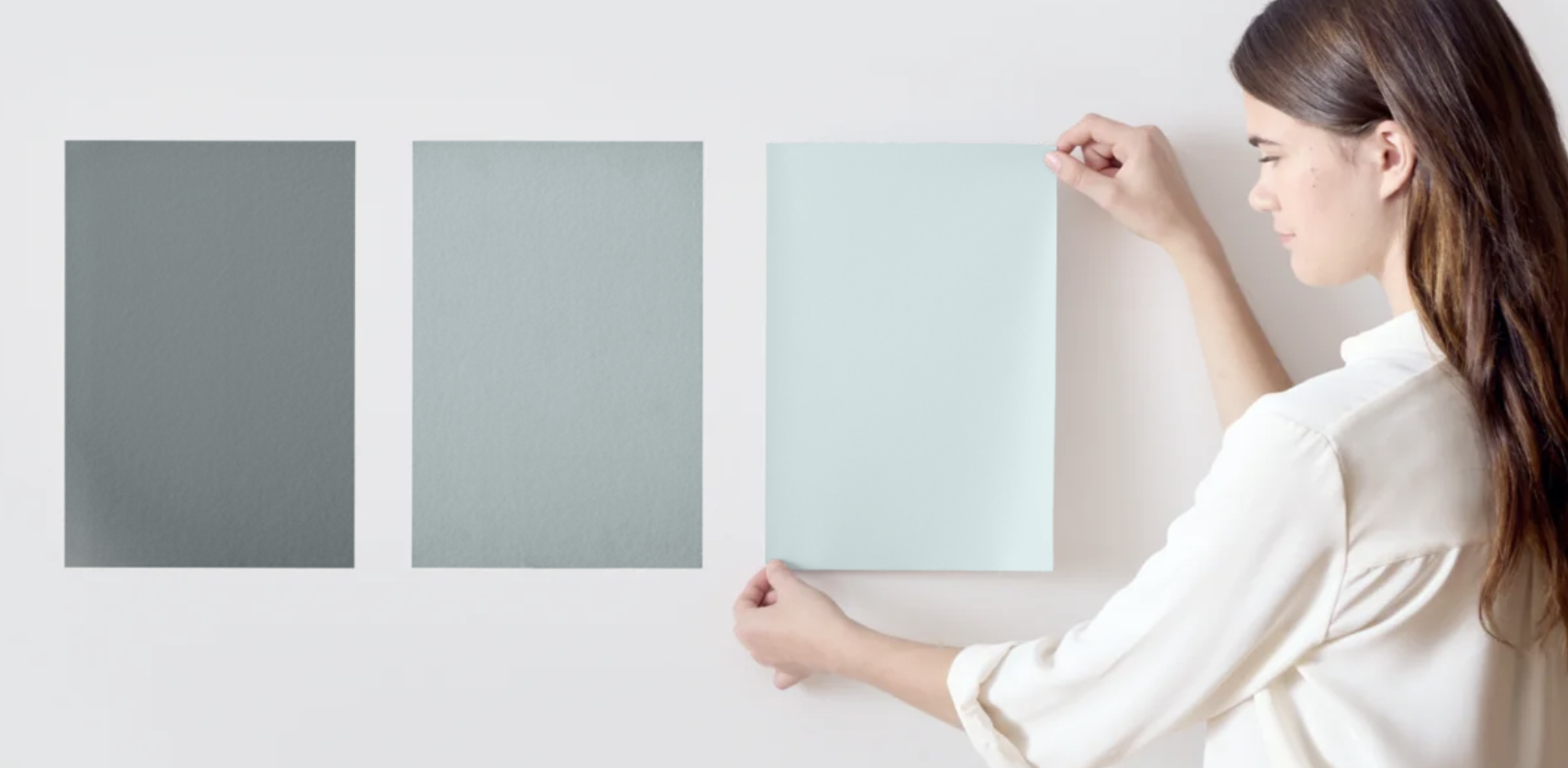
Source: Samplize
Why choose Samplize peel-and-stick paint sample sheets?
- Mess-Free Application: Samplize sheets are mess-free and easy to apply. Simply peel off the backing and stick them to your wall. No need for brushes, rollers, or cleanup.
- Real Paint Look and Feel: Unlike traditional paper paint chips, Samplize sheets are made with actual latex paint on large size sheets. This means you can see the true color, sheen, and texture as it will appear on your walls.
- Repositionable: If you want to see the color on different walls, you can easily move Samplize sheets around to different areas of the room to see how they look in various lighting conditions.
- Leave No Residue: When you’re done testing, remove the Samplize sheets without leaving any residue or damage to your walls.
- Wide Color Selection: Samplize offers a wide range of paint colors from popular brands, ensuring you’ll find the perfect shade for your project.
- Overnight delivery: You can have Samplize sheets delivered to your doorstep overnight. No more driving to the paint or hardware store to get samples and supplies!
How to Test Paint Colors in your Home
Here are the steps you should take to test paint colors in your home. If you follow these steps, you can avoid making costly mistakes, and find the perfect paint colors every time!
1. Select Your Colors
When it comes to testing paint colors in your home, I recommend choosing 3-5 paint colors to start with. Having multiple options to test is really helpful in seeing how various colors and their undertones look with your unique lighting conditions.
You can start with that beautiful color you saw online, or the one you saw in your friend’s living room, or choose some of my tried-and-true designer favorites. Just be sure to get a few different options to try out, because that will a) increase your chances of finding the right paint color the first time, or b) help give you valuable information if you have to try another round of sample colors.
2. Place the Paint Samples on your Walls
When your Samplize sheets arrive, simply peel off the backing and stick them to your walls. It’s a good idea to apply them directly next to your door or closet frames, so you can see how the color will look next to your trim. If you apply the paint sample sheets in the middle of your already-painted walls, your existing paint color might influence the way the new color appears to you. Placing the sample sheets next to white trim can help you see the new paint color more objectively.
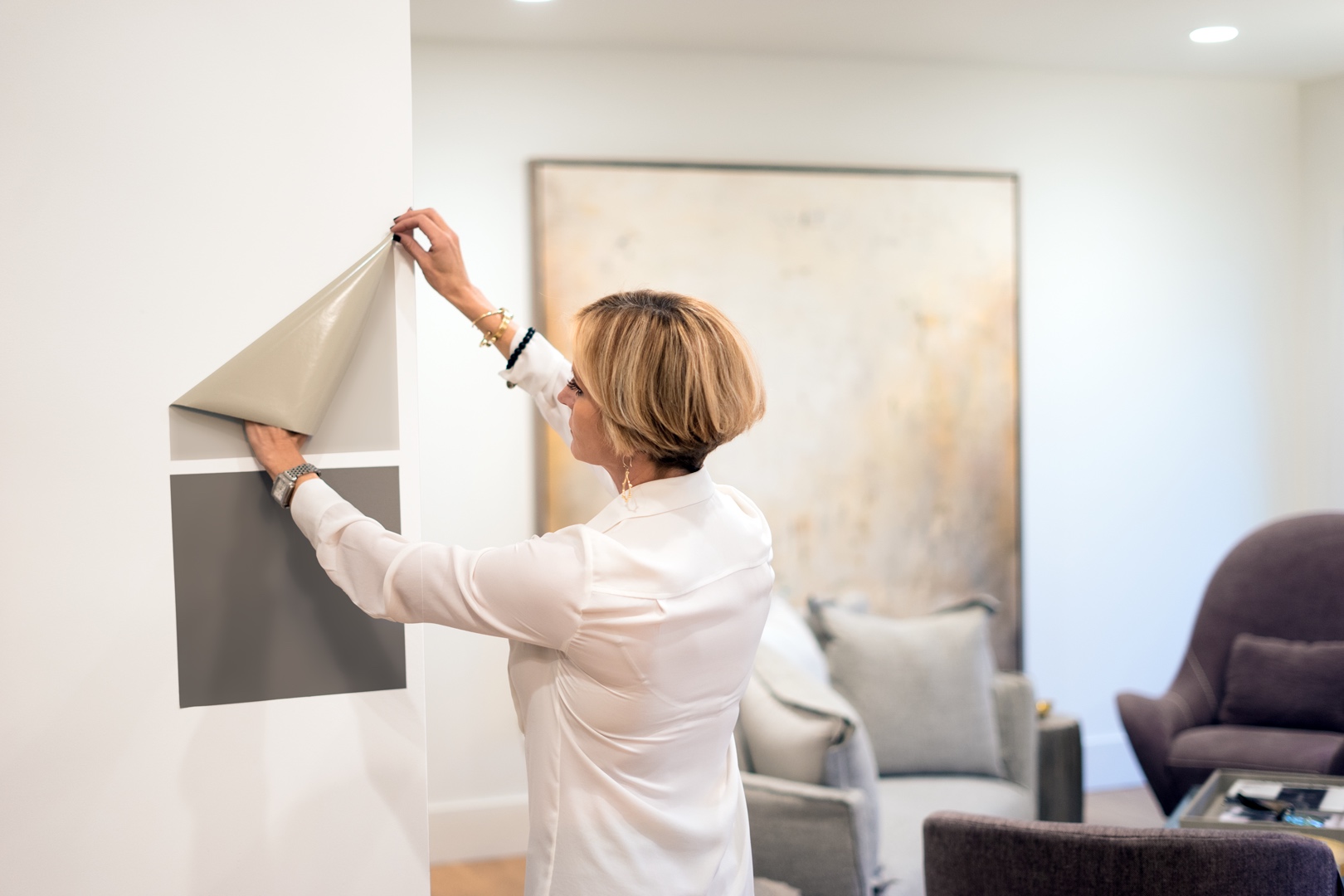
Source: Samplize
3. Observe and Decide
Leave the sheets on your walls for a day or two to observe how they look at different times of the day and under various lighting conditions. View them in the morning, in the afternoon, and under artificial light at night. Move them to different areas of the room to see how they look. Seeing the color in different lighting, and in different areas of the room will help you make an informed decision. The paint color that looks best in all of the lighting conditions is the right one for your space!
Oftentimes, you’ll find a paint color right away that you love and that works well in your room. But, many times you’ll have to choose another round of sample colors to test. It doesn’t mean you failed, it just means that your room has lighting conditions that require some adjusting of the paint colors to get the look you want. This is why it’s essential that you plan sufficient time for testing paint colors before your painters arrive, or before you tackle the project yourself.
4. Try New Colors, As Needed
If you didn’t find a winner in your first round of paint samples, you can still use what you learned about the first set of colors to help you choose the next set. Here are some tips for choosing your next round of paint colors to test.
If your sample paint colors were:
- Too dark – try going one or two shades lighter. You can find lighter shades of a paint color on the manufacturer’s website or by using a fan deck.
- Too light – you can go one or two shades darker with your color
- Too dull/drab – you’ll want to try a paint color that has more vibrancy or saturation to it. For example, if you tried a blue-gray, and it looks too dull to you, try one that leans a little more blue.
- Too strong/vibrant – you might need to pull back on the saturation. Try a color that looks more muted, or has a little more gray to it.
- Too yellow/beige – this color is too warm for your space. Try something that leans a little more neutral, muted, or even has a touch of gray to it
- Too blue/purple – this color is too cool for your space. Try something that has a little more yellow/beige or orange in it.
- Too gray/muddy – this is often a hint that you need a warmer, more inviting color in your space. Try a color that has a bit more yellow/beige to it, and possible go a little brighter.
When your new paint sample sheets arrive, just follow the steps above again to test the new colors in your space. Rinse and repeat!
Need some paint color inspiration?
If you’re searching for paint color inspiration, consider checking out my Favorite Paint Colors eBook. This eBook is a curated collection of tried-and-true designer favorite colors in every color family. It’s the perfect resource to help you find the ideal paint color for your project.
I also have several blog posts that share my paint color recommendations for any room in your home. You can check out my entire collection of painting blog posts HERE.
In conclusion, testing paint colors is an essential step in the process of choosing the perfect paint color for your home. Samplize peel-and-stick paint sample sheets offer a hassle-free, mess-free, and highly effective way to do just that. With a wide range of colors to choose from and the convenience of real paint sheets, you can confidently make your paint color decisions. Don’t forget to explore the “Favorite Paint Colors eBook” for additional inspiration and guidance on your painting journey. Happy painting!

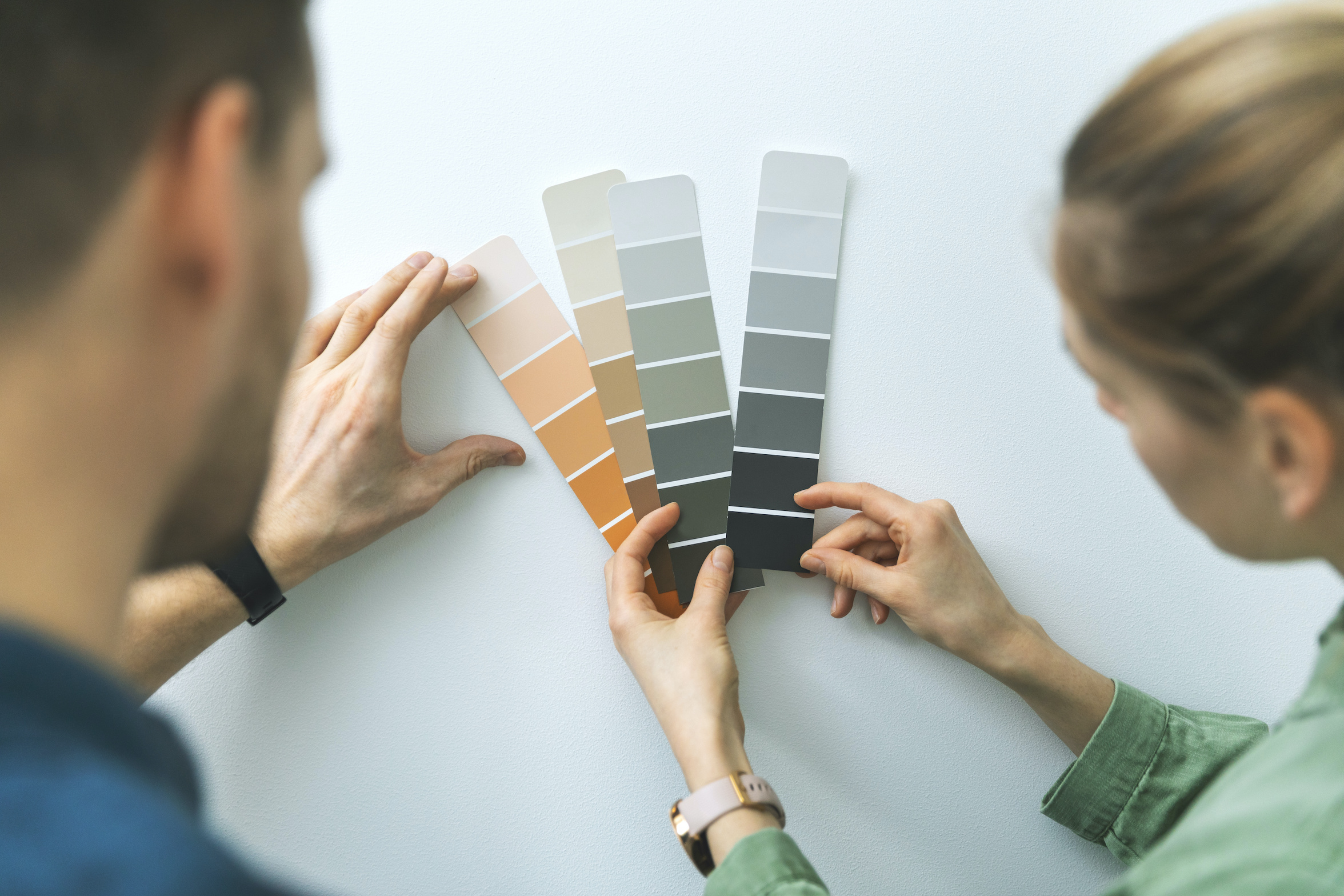
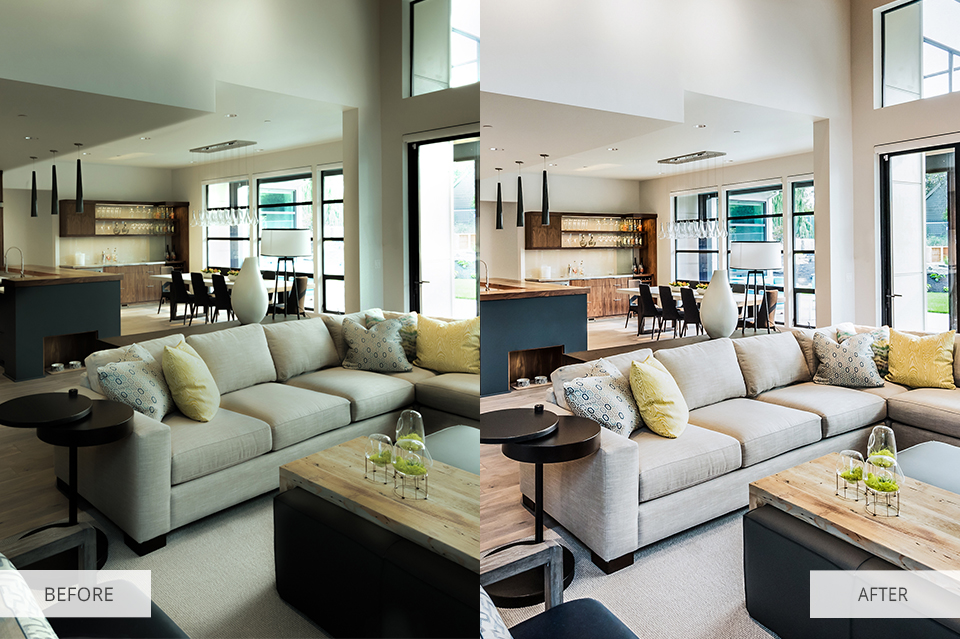
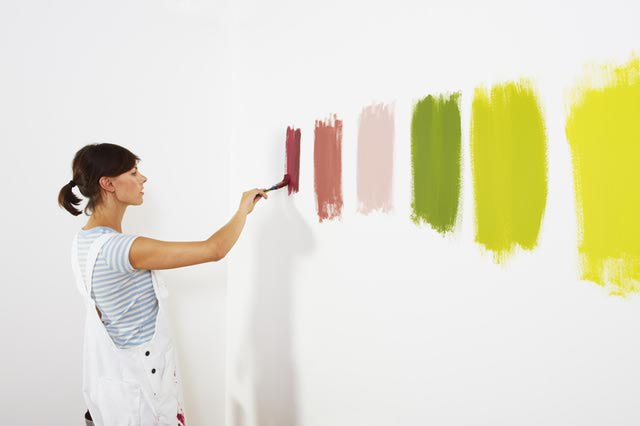
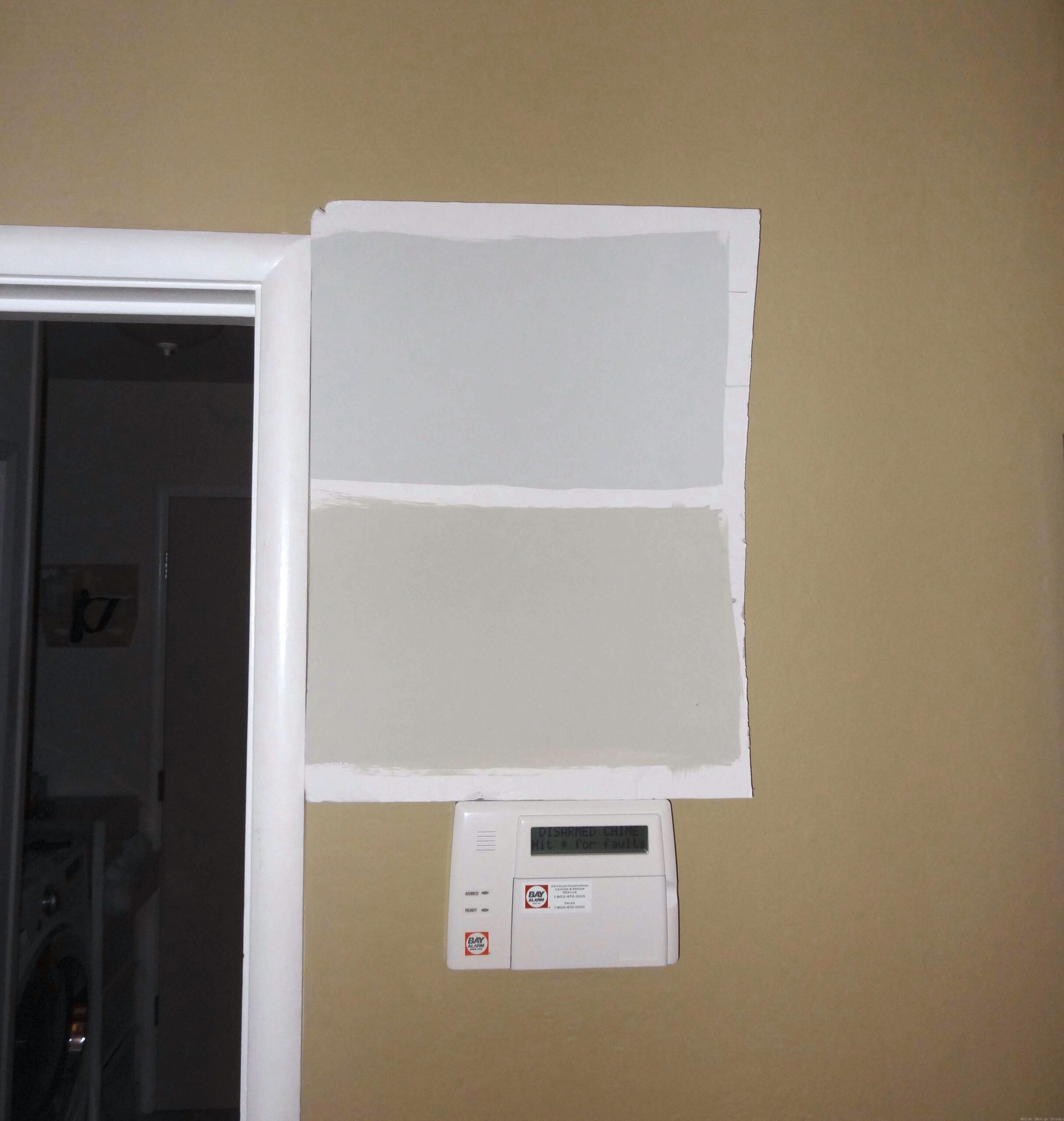

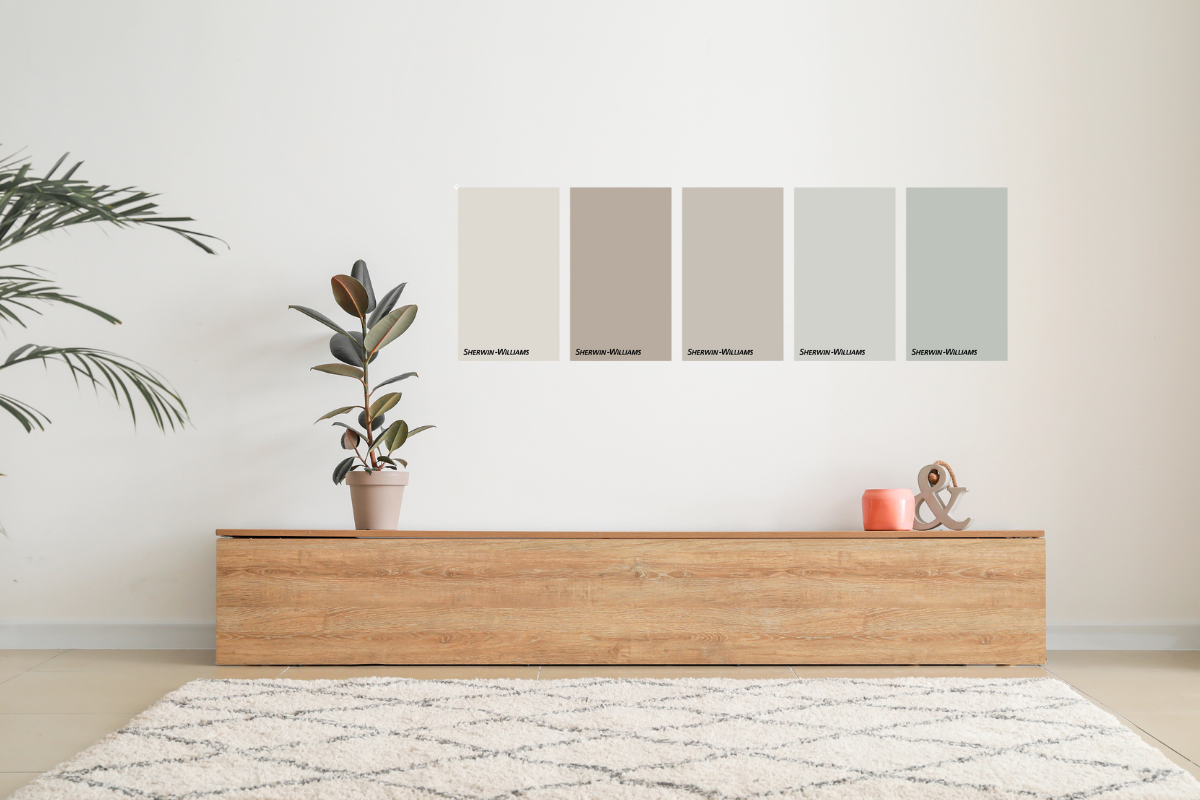
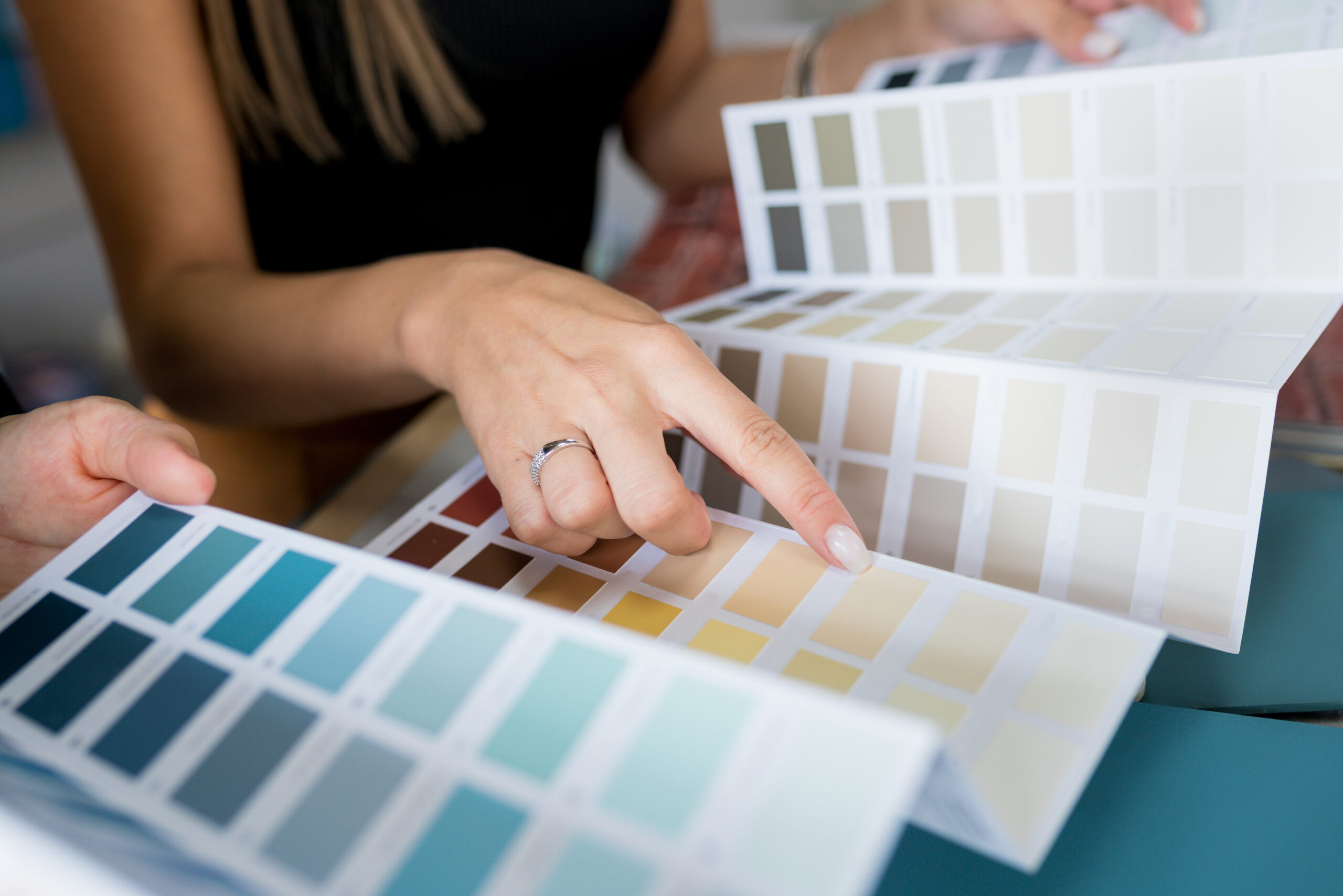
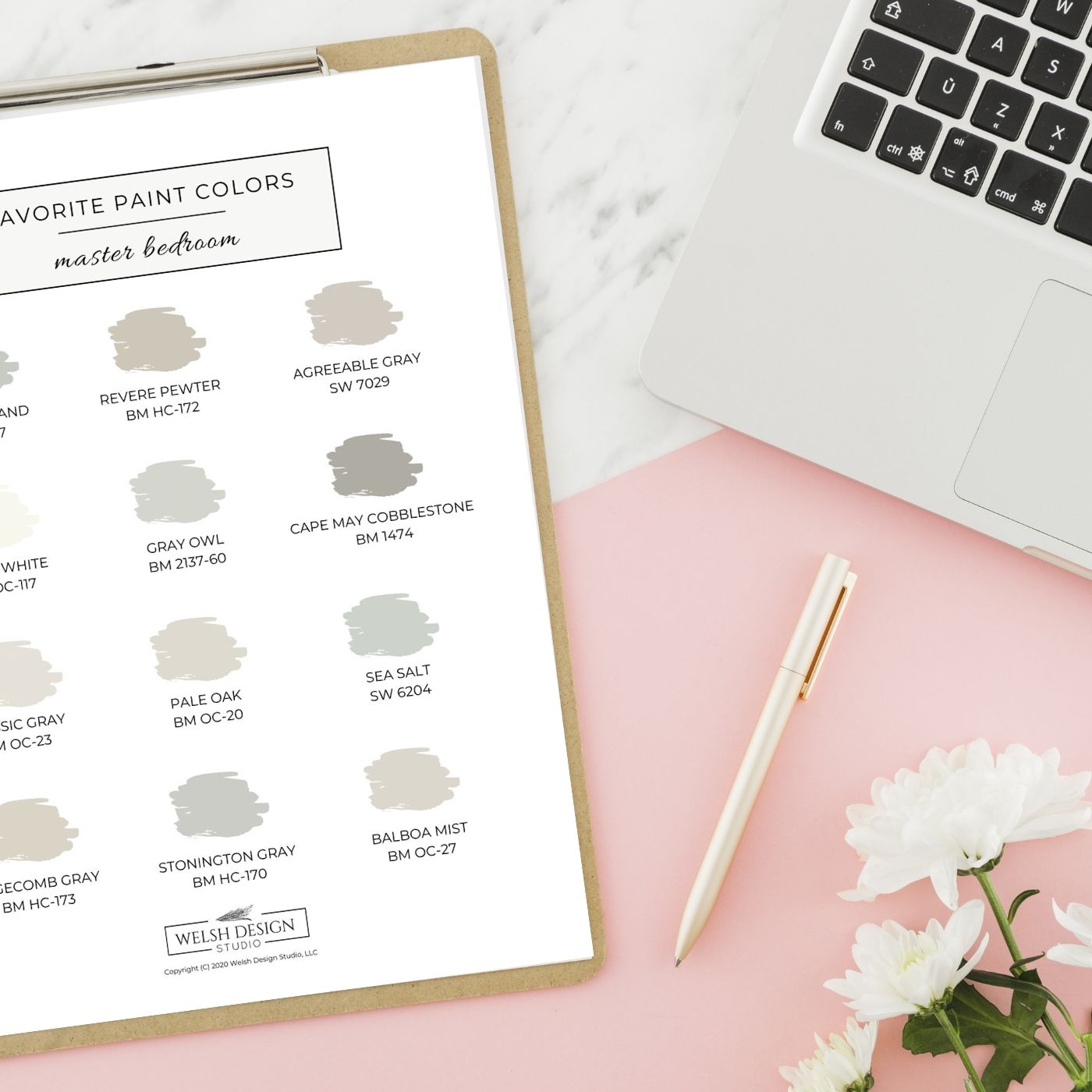
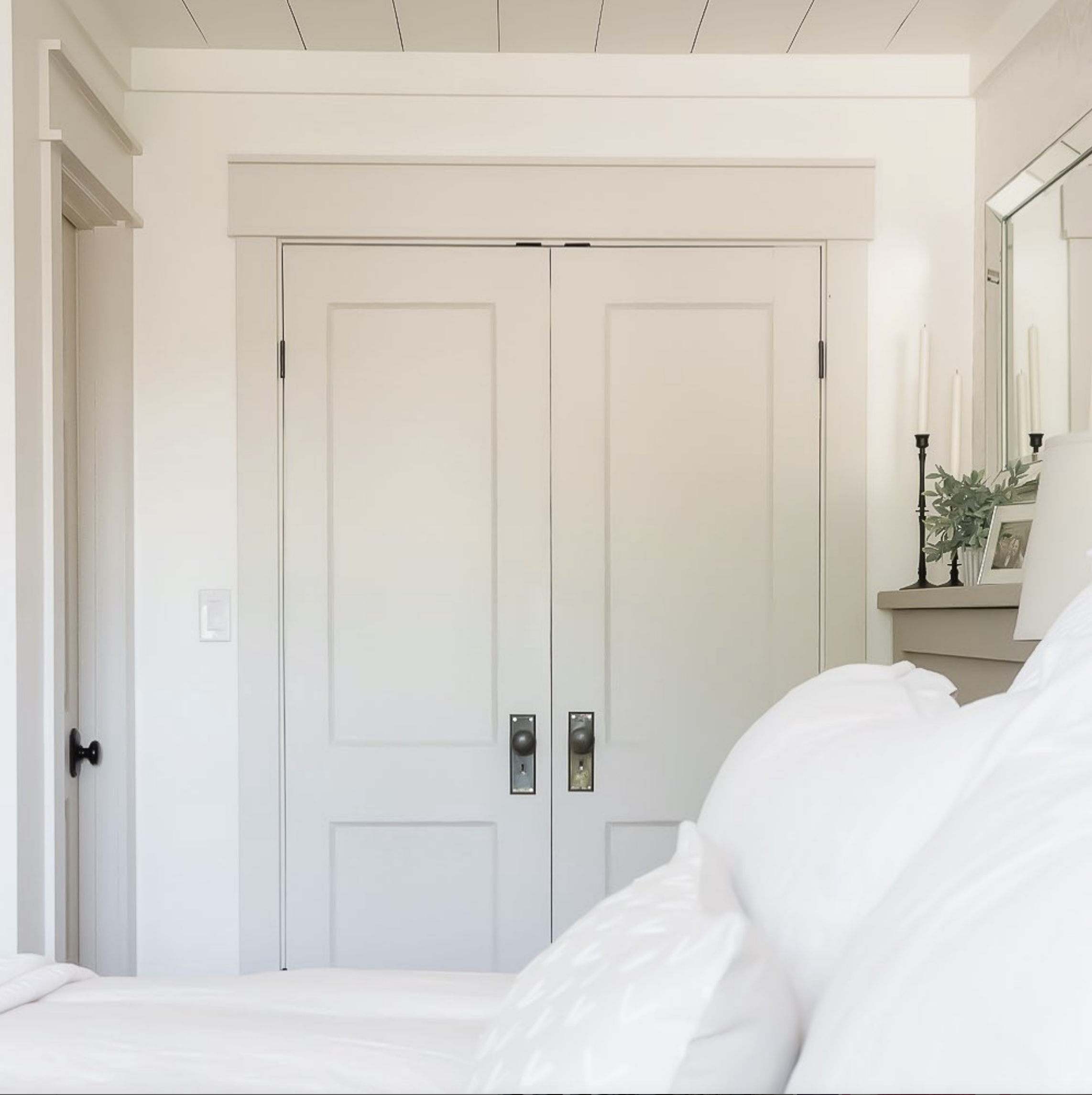
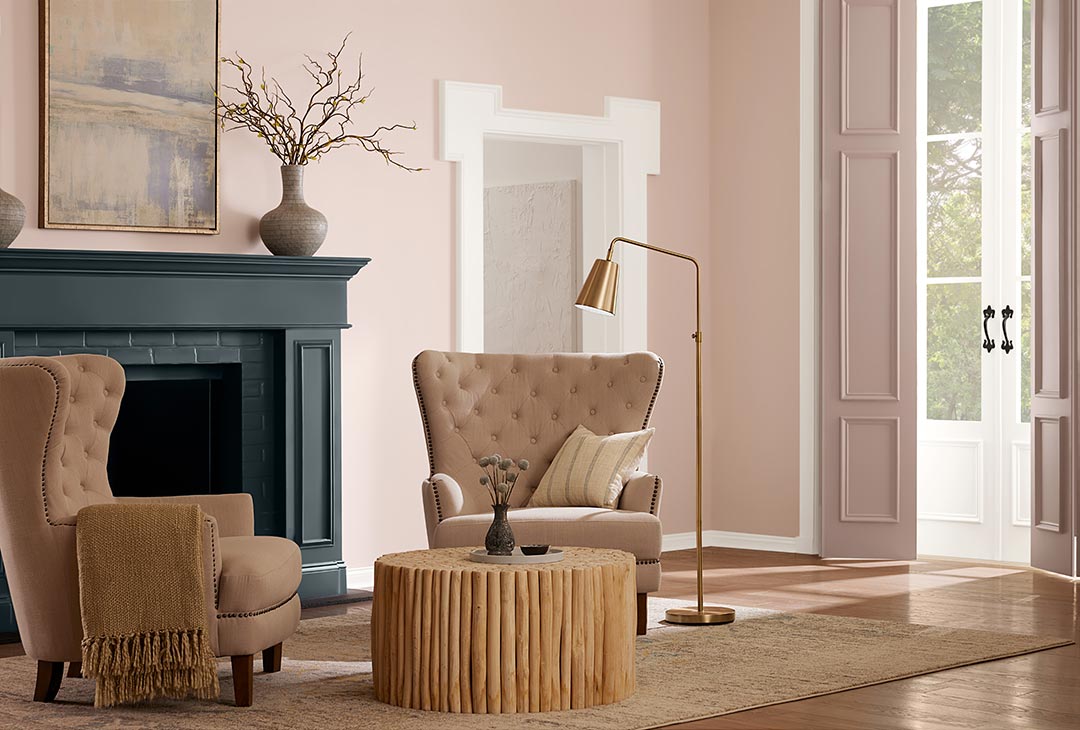

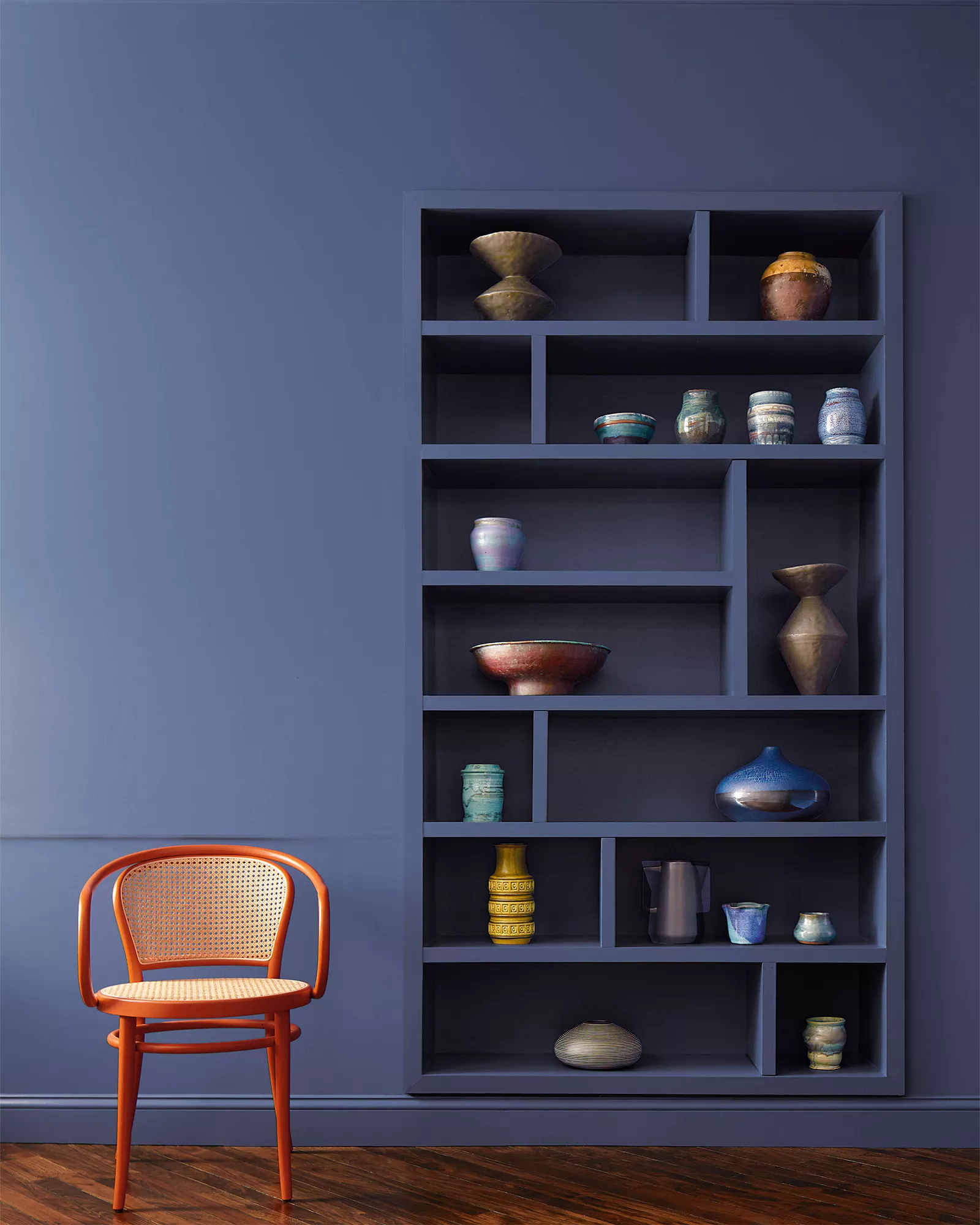
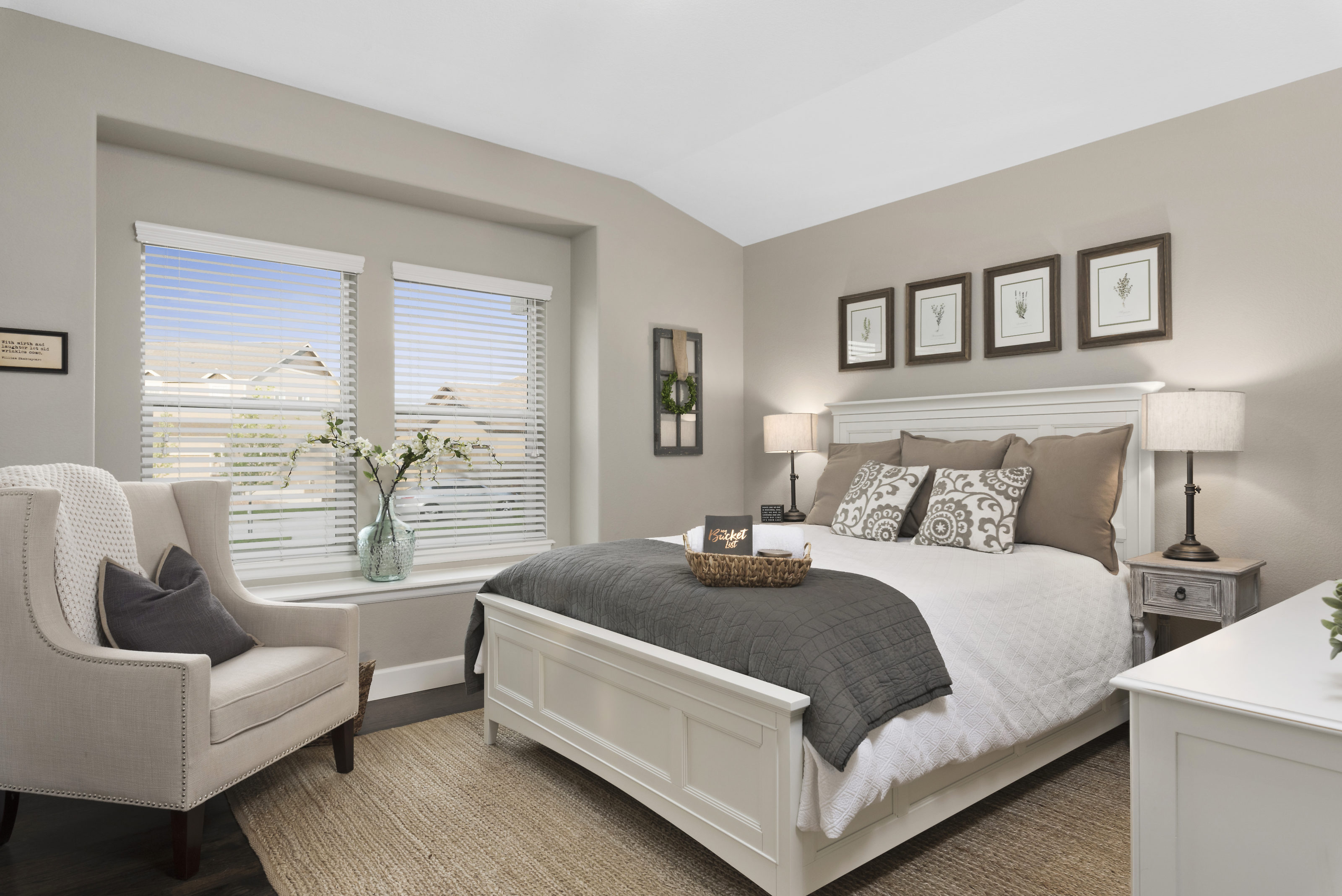
Leave A Comment